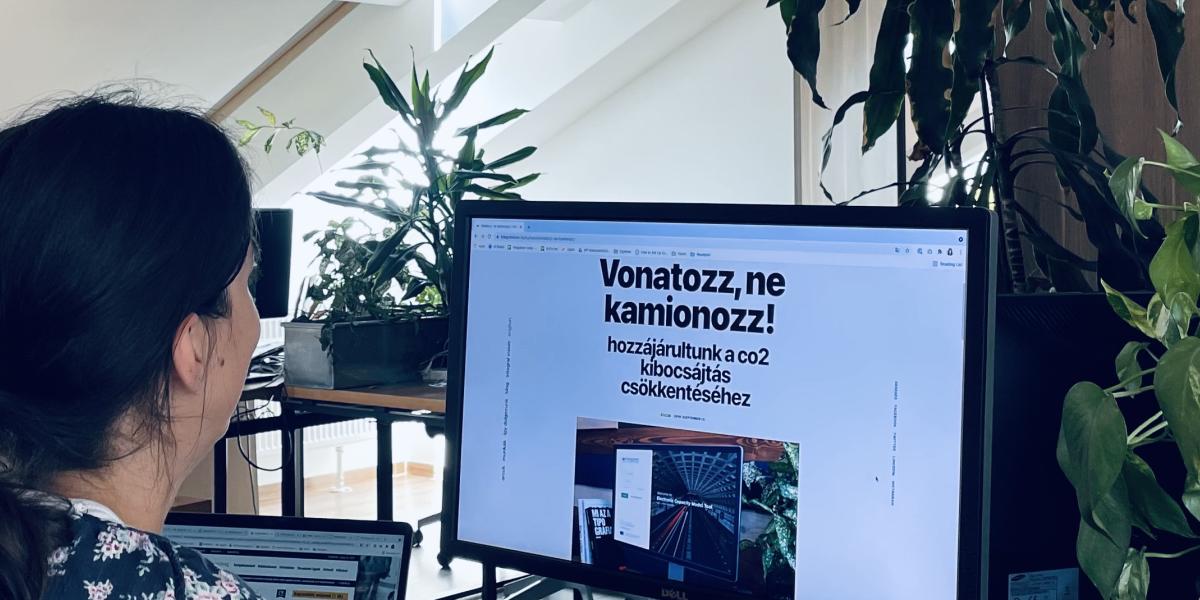
There is a long list of ever-changing, expanding requirements and recommendations (search engine optimization, accessibility, GDPR compliance, etc.) that are worth paying attention to when developing websites and online services. It is probably only a matter of time before the above list naturally comes to mind: an environmentally friendly website.
But how can an online service be “green” at all? What is eco-friendly web development?
Why is it necessary to make the internet “greener”?
In recent years, measures to reduce or even offset the environmental burden have become a constant topic in most economies and everyday life. According to some forecasts, by 2025, sustainability will also be one of the top priorities for the IT sector.
It is not so surprising, as we are experiencing day by day, that more and more of our daily activities are moving into the digital space. We are increasingly using our innovative tools for shopping, administration, learning, entertainment, orientation, and communication. The number of active Internet users is over 4 billion. It is estimated that smart devices, the internet, and the systems that support them are responsible for 3.7% of greenhouse gas emissions. (The number is roughly equal to aviation emissions.) This number is projected to double by 2025.
The fantastic amount of data flow needed to perform our day-to-day activities is provided by server farms growing in mushroom mode worldwide. (According to an analysis by the International Data Corporation, the amount of data produced by humans and machines in 2020 was more than 60 zettabytes or more than 60 trillion gigabytes.). Given their current operation and growth, by 2025, these data centers alone will be responsible for one-fifth of the world’s electricity consumption, more than 3% of CO2 emissions. By 2040, emissions from digital storage could reach 14%.
What makes a website sustainable?
In a broad sense of sustainability, the Sustainable Web Manifesto summarizes the guidelines to be followed in six points. Let the internet be:
- clean (based on renewable energy),
- efficient (using the least power and material resources),
- open (available and giving the user control over their data),
- honest (not misleading),
- regenerative (providing a service to support human and planetary growth),
- flexible (available in space and time).
In practice, we can reduce the environmental impact of a website by following specific practical principles.
When designing a new website, the most important thing to remember is that users will find the content they are looking for as efficiently as possible, thus avoiding unnecessary page loads and the associated traffic. When choosing a design, it is necessary to think in the long run so that surfaces are created that do not become obsolete for years so that frequent alterations and developments can be avoided. In addition, a well-thought-out use of visual and video materials and animations, as well as the optimization of their sizes, can achieve a significant reduction in resource requirements.
During the development, the selection of the appropriate methodology is emphasized. The essence of agile development is that delivery takes place in smaller (often fortnightly) units, based on frequent feedback and cooperation between the customer and the supplier. The development process is more adaptive, more cost and resource-efficient overall. During the development, the purity and reusability of the code is also an important aspect. Using modular frameworks and open source solutions can also save a lot of money on the development, maintenance, and upgrades. The power inherent in community development and modular construction contributes significantly to long-term, sustainable architecture. The custom code is born when you need it, so you can meet your unique development needs by minimizing your expenses.
Optimizing performance and thus page load speed also saves resources and increases the user experience. By following the web standards, keeping the code clean, minimizing it, we can also make the website faster, optimize the load on the server and make the operation more economical with the help of proper caching.
It is worth examining where the energy needed to operate comes from and how efficient the infrastructure is. Instead of the few dozen eco-friendly hosting providers that appeared in the early 2000s, the number of “green hosts” is now expanding at an exponential rate. If we can, choose a service provider that uses renewable energy, energy-saving equipment, and an open-air eco-friendly cooling system.
In 2020, humans and machines generated 64.2 zettabytes — that is, 64 trillion gigabytes — of data. By 2025, experts forecast annual growth of 23%. It does not matter for what purpose, according to what principles, by what means we produce and transmit this data. It is essential to become more aware of both production and consumption in real life and the digital space. In addition, adherence to sustainability principles can be measured in business benefits - higher visibility, the volume of returning users, lower development costs.
Concerning green developer policies, we see a lot of overlap with areas we have been focusing on for years. For example, user-centric design, increasing page load speeds, and search engine optimization are all areas that provide measurable business benefits, and the good news is that the impact of these steps on the environment can also be demonstrated. Sustainability criteria are definitely worth addressing because of their nature and our future, but also because of their business added value.
If you are curious about the environmental impact of your website, the Ecograder or Website Carbon Calculator pages can be a good starting point to help us. You can search the Green Web Foundation’s database for an eco-friendly hosting provider and visit https://sustainablewebdesign.org/ for more information on “green web development” opportunities. At the same time, optimizing the efficiency of individual sites and functions is the tip of the iceberg in ensuring sustainability. It is worthwhile to work together from the ground up, optimizing operational processes and long-term, strategic thinking.
Share with your friends!